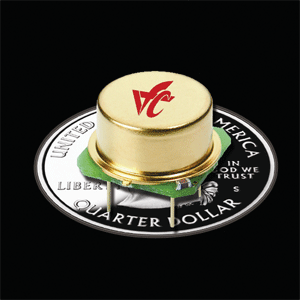Is a directly heated oscillator right for you?
BY GREG ARTHUR
Valpey Fisher, Hopkinton, MA
http://www.valpeyfisher.com
Today, many electronic applications are becoming portable, from GPS units to test equipment. These devices often must operate in the field without attention for many months while continuously consuming valuable battery power or may have stringent life requirements such as SARSAT beacons.

New highly stable miniature temperature-compensated crystal oscillators (TCXOs) have helped a great deal, but some applications require the stability only available from an ovenized oscillator. This is where the designer starts to run into trouble, as typical oven-controlled crystal oscillators (OCXOs) consume multiple watts of power, making them unsuitable for use in battery powered systems.
TCXOs vs OCXOs
For argument’s sake, let’s define a system that requires a temperature range of −40 to 85C, an overall power consumption not exceeding 2,000 mAh, and timing stability of 100 ppb required to ensure low bit error rate (BER). Phase noise is also important if this reference oscillator is used to generate the RF carrier.
Today’s best SMT TCXOs manage to reach stabilities of ±280 ppb over the industrial temperature range and consume only 30 mW in small 5 x 7-mm footprint. But their phase noise performance is limited by the Q of the strip crystal (Q is typically 160,000 for a 10-MHz strip), and the maximum available frequency is 40 MHz in most cases. Portable instrumentation, for example, requires a more precise timing source to meet the performance goals of the equipment.
The next step is to examine OCXOs. Traditional OCXO technology uses SC-cut crystals because they have a relatively flat temperature response curve (around 80 to 95C) and an extremely high Q (around 500,000 for a 10-MHz round crystal). The crystal element is heated 5 to 10C above the maximum operating temperature and held steady, producing minimal frequency variation due to external ambient temperature changes; 5 to 10-ppb temperature stability is commonly available.
The major problem is the ample current needed to heat the OCXO. Reviewing offerings from several OCXO manufacturers we find the lowest power consumption available for conventional ovens (in steady state) to be around 1.5 W with an initial warm-up power consumption around 3 to 4 W. This is mostly because these OCXOs use a separate vacuum-sealed crystal soldered to a thermally “lossy” PCB onto which is mounted a transistor pumped with current to heat the crystal element to the required 90 to 95C.
The size of a conventional OCXO also becomes prohibitive for portables. The smallest available device comes in a DIP14 package, which, although small, is not small enough to fit in today’s portable radio.
The solution is simple, but not easy. Since the crystal elements are plated on both sides with an electrode, why not plate a resistive element directly onto the crystal surface as a heater? The idea for directly heated crystal elements has been around for years, but took a lot of development to make a reality.
One technique of directly coupled oven elements drastically reduces power consumption and size. A primary hurdle was to develop directly coupled heating structures that do not lower the Q of the resonator and degrade its performance. Valpey Fisher corrects the final frequency by replating the electrodes after adding the resistive element. A thermocouple is bonded to the resistive element, and the crystal element is mounted on four points instead of two.The extra mounts and resistive ring add ruggedness and vibration resistance not available with standard two-point mount designs. The entire oscillator is contained in the evacuated enclosure to achieve the final small size.
For example, the total consumption of a directly heated OCXO is less than 150 mW steady state with 1.5 W consumed during warm-up. Another benefit is the shortened warm-up time of less than 30 s compared with the standard 3 to 6 min for conventional ovens. Total power consumed by Valpey Fisher’s VFOV400 over 24 hours is 840 mAh compared with a typical TCXO power consumption of 80 mAh and a conventional OCXO at 8,000 mAh.
| Cost | Size | Power | Warm-up | Phase Noise | Temperature Stability | |
| TCXO | Low | Smallest | Lowest | Fast | Poor | Poor |
| Conventional OCXO | High | Largest | High | Longest | Best | Very good |
| Direct heated OCXO | Medium | Small | Low | Fast | Best | Very good |
The temperature stability of 20 ppb is good enough for GPS holdover (48 hours), and the output phase noise is comparable to traditional ovens with SC-cut high-Q crystals. Temperature stability of 5 ppb is producible for commercial temperature ranges. The directly heated oscillator can be housed in a single TO-8. Although still more power hungry than a TCXO, it is definitely the best in regard to tradeoffs of power and performance for portable applications that require accurate timing reference sources. ■
Advertisement
Learn more about CTS Valpey Corporation





